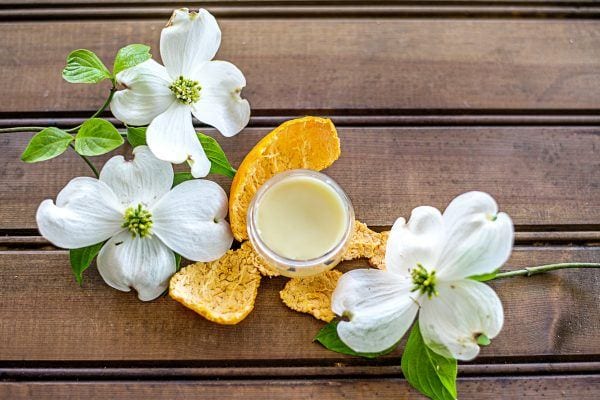
Why should you make your own perfumes? Why not!
If you are a fan of essential oils, then you have most of what you need to create a custom scent in the comfort of your home. DIY perfumes can be tailored to fit your mood and style. Plus, they are a fraction of what it cost to purchase the chemical laden stuff from the store. Before you get started, here’s a little primer for making your own perfume.
Carrier Oils
Carrier oils dilute the essential oil before applying it to your skin. Why should you bother with them? Well, essential oils are pretty potent and can be overwhelming if used directly on your skin, and may cause mild irritation. Plus, they can be expensive and you want to get the best value for your money. Carrier oils act as the base for the essential oil that is being mixed into it. Overall, most carrier oils do not have an overwhelming scent and has added benefits for your skin as well. Some popular carrier oils include: jojoba, sweet almond, olive, Argan, fractionated coconut and grapeseed oils.
You can use whatever carrier oil you like for this project. I used Argan oil because I like that it absorbs easily and has a mild, sweet scent. Argan oil is great for your skin as it has restorative qualities for skin cells. It helps with the skin elasticity, softens wrinkles and fine lines. Argan oil will help restore nutrient content to skin cells, treating an array of skin conditions. It’s also great for your hair!
Mixing Your Own Scents
Before you start mixing essential oils together, you should understand the scent notes of the oil you wish to use. Generally speaking, your perfume should have these three notes:
Top Note: This is the first impression and the scent that will fade the quickest. Examples of top notes: lemon, orange, grapefruit, lime, tangerine, citronella, bergamot, eucalyptus, lavender, lemongrass, peppermint and spearmint.
Middle Note: This is the heart of the perfume. It will fade after a couple of hours once applied. Examples of middle notes: chamomile, cinnamon, clove, cypress, fennel, geranium, jasmine, juniper, marjoram, neroli, nutmeg, pine, fir, rose, rosemary, spruce, tea tree, thyme, and ylang ylang.
Base Note: This is the anchor of the perfume and it will lasts the longest. Examples of base notes: cedarwood, frankincense, ginger, helichrysum, myrrh, patchouli, sandalwood, vanilla, and vetiver.
A good ratio for blending is:
Base: 20%
Middle: 50%
Top: 30%
This ratio is not set in stone. Your nose will tell you what you like. Just try to keep the base note the lowest, since it is the strongest and most potent scent.
The best way to get the scent you want is to experiment! You will know instantly if you like you blend or not. Take notes on what scents work well together. Think about some natural scents you are drawn to and try to emulate it. You can’t go wrong.
DIY Fruity Spring Bloom Solid Perfume
I love fruity scents. This blend is bright with a hint of spice. It’s a nice mix of citrus/exotic. The best part of using a solid perfume versus a traditional liquid one is that is also carries the added benefit of beeswax for your skin. It lasts much longer than regular liquid perfume.
Supplies
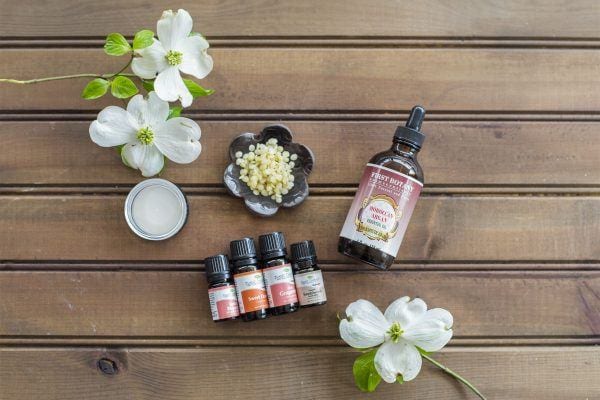
- 1 tablespoon beeswax pastilles (available here)
- carrier oil of your liking (we used First Botany Argan Oil)
- essential oils of your choice (as always,we used Plant Therapy Essential Oils which are all available from here)
- a small container (a small 1 oz travel lip balm or recycled eye shadow container works well)
- heat proof container or small paper cup
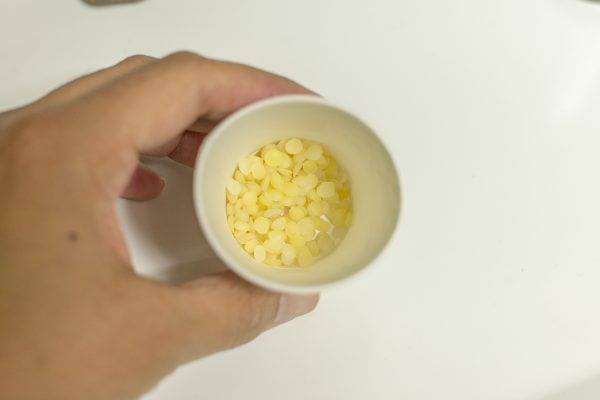
Add the beeswax pastilles to the smaller paper cup or to a heat proof container. For small amounts like this, I use a microwave to heat the wax. I heat in 30 second increments until it is melted.
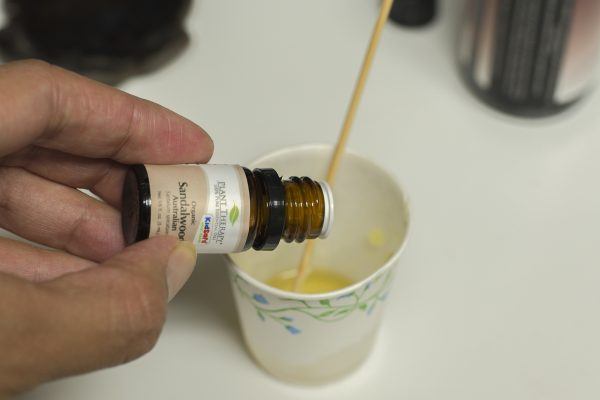
Add your essential oil blend to the melted wax.
My ratio for my perfume blend was:
- 20 drops sweet orange essential oil
- 7 drops grapefruit essential oil
- 7 drops spring blossom essential oil (a synergy blend from Plant Therapy)
- 10 drops sandalwood essential oil
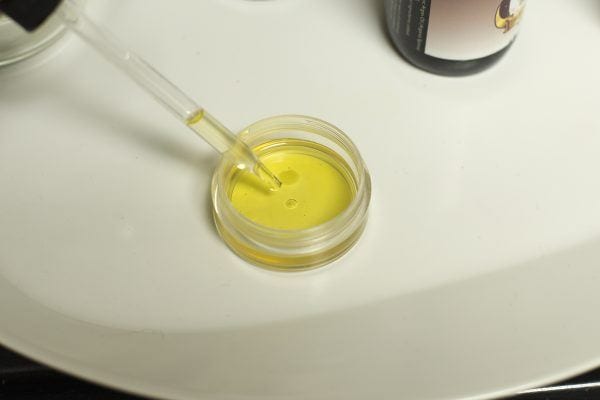
Heat up a couple of tablespoons of your carrier oil and add it to the melted beeswax blend. Gently mix. Let it solidify and it is ready to use.
Some Blends to Try
Romantic Blend
- 25 drops rose essential oil
- 10 drops lime essential oil
- 10 drops vetiver essential oil
Sensual Blend
- 20 drops sweet orange essential oil
- 15 drops ylang-ylang essential oil
- 10 drops cedarwood essential oil
Energy Blend
- 12 drops grapefruit
- 8 drops ylang-ylang
Where To Buy Essential Oils
When purchasing essential oils, be sure to opt for 100% pure oils free of adulterants and additives. For this project, and for all of our projects, we used Plant Therapy Essential Oils.
All of the oils mentioned in this article are available to be purchased from this page on their official website. They also sell the majority of their oils on Amazon here.
Love DIY Projects Like This?
Then get yourself a copy of the Everyday Roots downloadable guide with 215+ DIY recipes for making your own natural health and beauty products and non-toxic cleaning supplies. Get your copy here.
